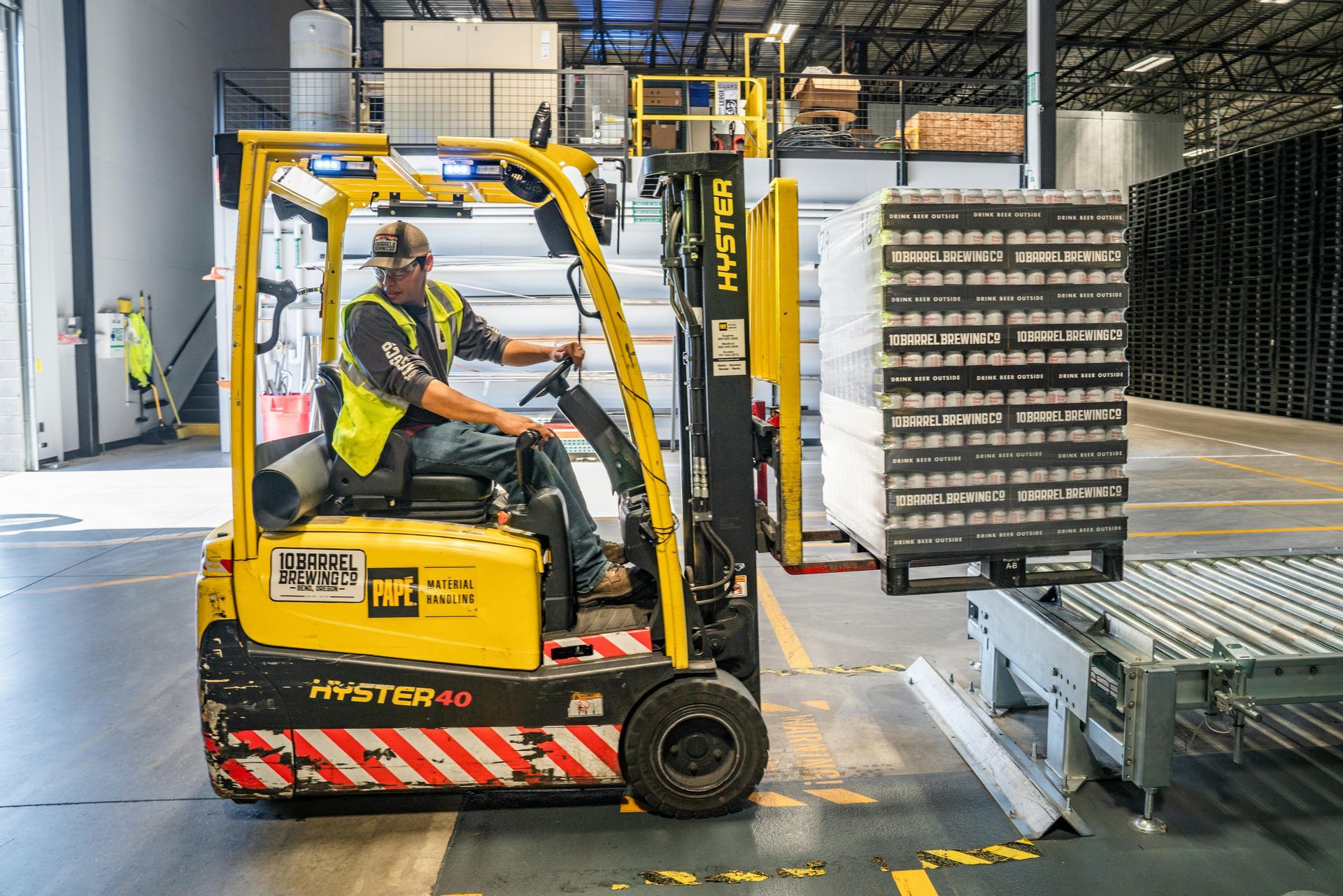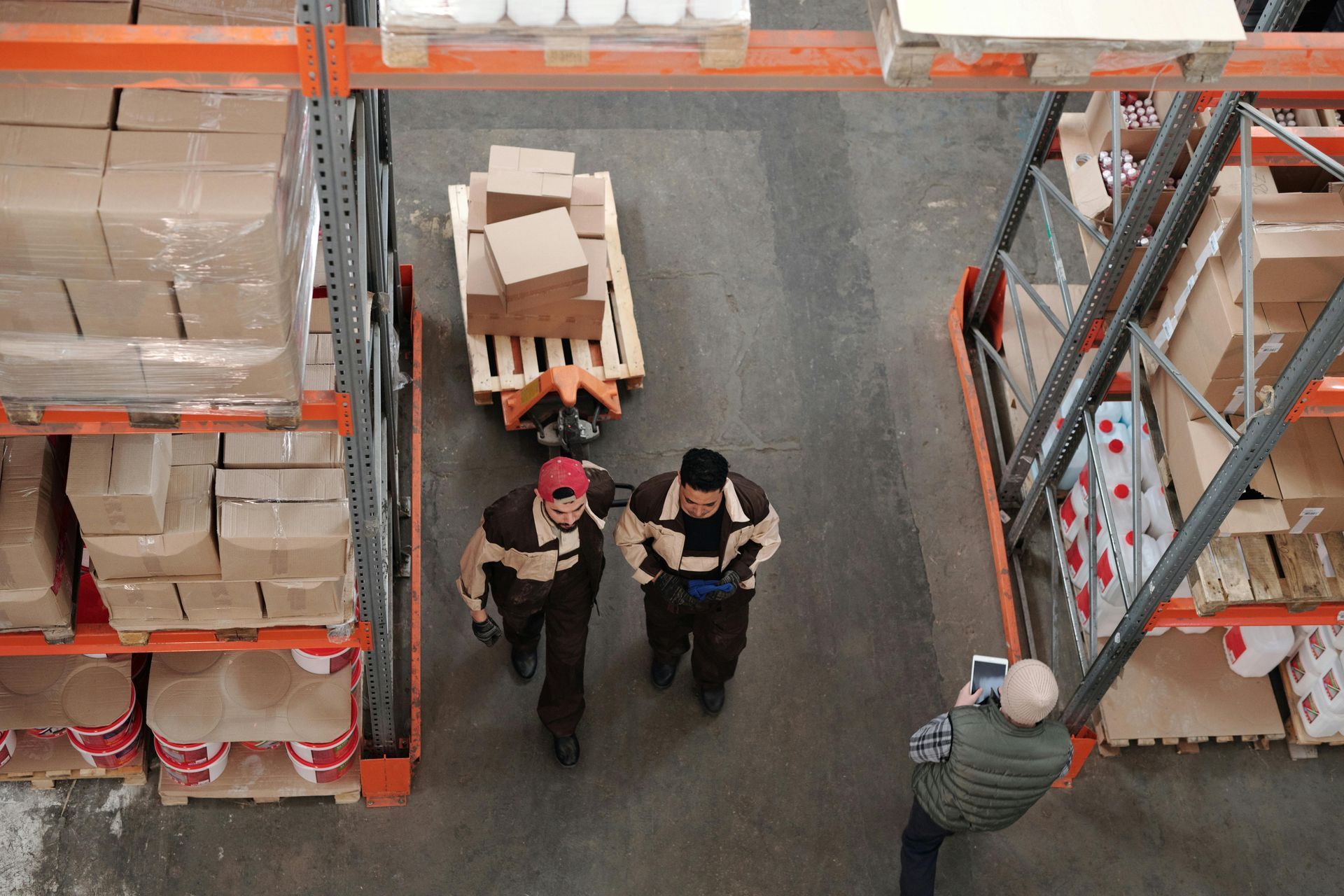Which Pallets Are Right For My Needs?
Choosing the right pallet is crucial for optimizing supply chain operations, ensuring the safety of goods, and effectively managing costs.
With so many options available, it can be challenging to determine which pallet is the best fit for your specific needs.
Explore some key considerations, such as size, weight capacity, material, and more, to help you decide on the type of pallet that will work best for your business.
Pallet Size and Industry Standards
Pallet size is critical, as it directly impacts how well your products fit on the pallet and how efficiently they can transport.
The standard pallet size in North America is 48x40 inches, commonly called a GMA pallet. However, other industries and regions may use different sizes. For instance, the automotive industry often requires 48x45-inch pallets, while European markets use the 1200x800 mm Euro pallet.
When choosing a pallet size, consider the dimensions of your products, the storage systems in your warehouse, and compatibility with transportation methods.
Selecting a size that adheres to industry standards can improve efficiency and reduce the risk of incompatibility with racks, containers, and shipping equipment.
Weight Capacity
Understanding the weight your pallet needs to support is essential. Pallet classification generally falls into three categories:
- Light-duty: Suitable for loads under 1,000 pounds.
- Medium-duty: Ideal for weights between 1,000 and 2,500 pounds.
- Heavy-duty: Designed to handle loads exceeding 2,500 pounds.
Overloading a pallet can compromise its integrity and lead to safety hazards.
To avoid this, calculate the total weight of your goods and any additional equipment the pallet will hold. Always select a pallet that exceeds your weight requirements to ensure durability and safety.

Types of Pallets
The material of your pallet plays a significant role in its performance, cost, and suitability for specific applications.
- Wooden Pallets: Wooden pallets are the most widely used due to their affordability and versatility. They repair and recycle easily, making them a sustainable choice. However, they may not be suitable for environments where hygiene or moisture resistance is a priority.
- Plastic Pallets: Plastic pallets are durable, lightweight, and resistant to moisture and chemicals. They are ideal for industries like pharmaceuticals and food processing, where cleanliness is critical. While their initial cost is higher than wooden pallets, their longevity often justifies the investment.
- Metal Pallets are the sturdiest option for heavy loads or harsh environments, such as automotive manufacturing. They are also resistant to pests and weather but have a higher price tag.
- Composite and Pressed Wood Pallets: These options are lightweight and economical, making them a popular choice for one-way shipping. However, they may not be as durable as wood or plastic alternatives.
Temperature Considerations
If your operations involve extreme temperatures, such as refrigerated storage or outdoor shipping, you'll need pallets that can withstand these conditions.
Plastic and metal pallets are excellent for such environments because they resist warping, cracking, and mold growth.
Suppliers treat wooden pallets for added durability but may still be prone to issues like moisture absorption in wet or humid conditions.
Stringer vs. Block Pallets
The construction of a pallet affects its usability and durability.
- Stringer Pallets: These pallets use parallel boards (stringers) for support, typically allowing for two-way entry with forklifts. They are cost-effective but not as durable or versatile as block pallets.
- Block Pallets: Block pallets feature a sturdier design with blocks at each corner and along the middle, allowing for four-way entry; this makes them easier to handle with forklifts and pallet jacks and is ideal for heavy loads or high-volume operations.
Consider your handling equipment and load requirements when deciding between stringer and block pallets.
Pricing and Budget Considerations
The cost of a pallet varies depending on its material, size, treatment, and customization.
Wooden pallets are generally the most affordable upfront, while plastic and metal options require a higher initial investment.
However, the long-term savings from durability, reusability, and reduced maintenance can make these options more cost-effective.
Consider cost-effective solutions like pressed wood or composite pallets if you ship goods internationally or use pallets for single-use shipments. For multi-user applications, investing in higher-quality pallets may provide better value.

Longevity and Maintenance
The lifespan of a pallet depends on its material and how well it is maintained.
Wooden pallets can last several uses if appropriately handled but may require repairs.
Plastic pallets often have a longer lifespan and are virtually maintenance-free, while metal pallets are the most durable but also the most expensive to replace if damaged.
To extend pallet life, ensure proper handling and storage practices. For example, avoid overloading, use pallet racking systems correctly, and keep pallets clean and dry.
Recycling or repurposing old pallets is another way to maximize their utility and reduce environmental impact.
Work With Global ICB
Choosing the right pallet involves carefully evaluating your needs, including size, weight capacity, material, and operational environment.
Considering these factors, you can enhance efficiency, protect your goods, and optimize costs.
If you're unsure which pallet is right for your business, our team is here to help!
Contact us today for personalized recommendations and high-quality pallet solutions tailored to your needs.

